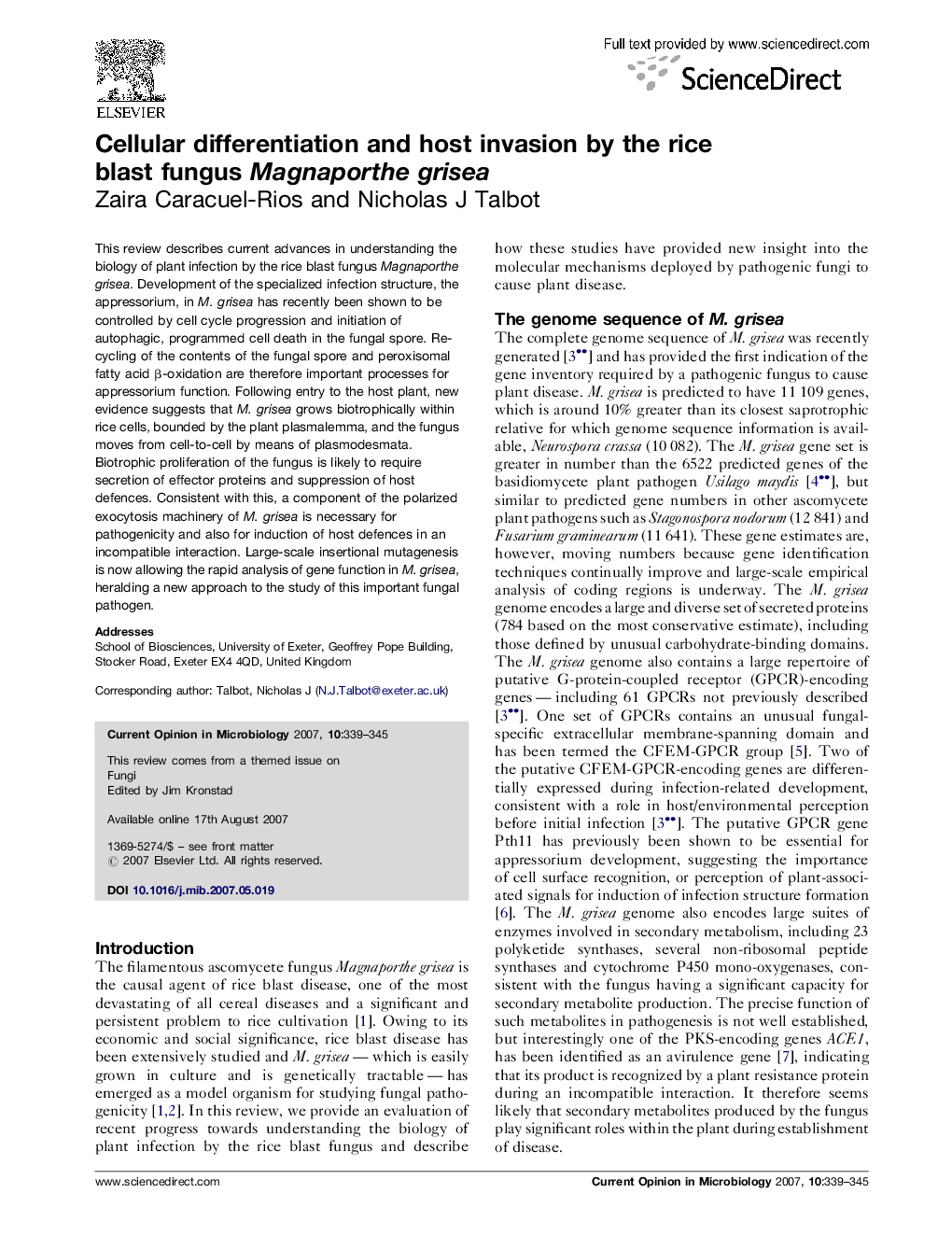| Article ID | Journal | Published Year | Pages | File Type |
|---|---|---|---|---|
| 3399648 | Current Opinion in Microbiology | 2007 | 7 Pages |
This review describes current advances in understanding the biology of plant infection by the rice blast fungus Magnaporthe grisea. Development of the specialized infection structure, the appressorium, in M. grisea has recently been shown to be controlled by cell cycle progression and initiation of autophagic, programmed cell death in the fungal spore. Re-cycling of the contents of the fungal spore and peroxisomal fatty acid β-oxidation are therefore important processes for appressorium function. Following entry to the host plant, new evidence suggests that M. grisea grows biotrophically within rice cells, bounded by the plant plasmalemma, and the fungus moves from cell-to-cell by means of plasmodesmata. Biotrophic proliferation of the fungus is likely to require secretion of effector proteins and suppression of host defences. Consistent with this, a component of the polarized exocytosis machinery of M. grisea is necessary for pathogenicity and also for induction of host defences in an incompatible interaction. Large-scale insertional mutagenesis is now allowing the rapid analysis of gene function in M. grisea, heralding a new approach to the study of this important fungal pathogen.
